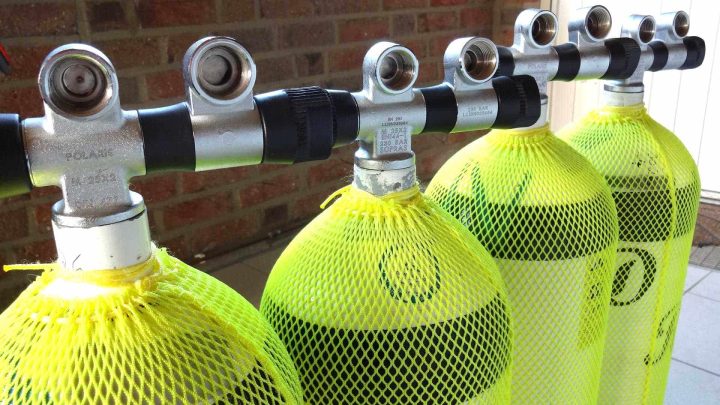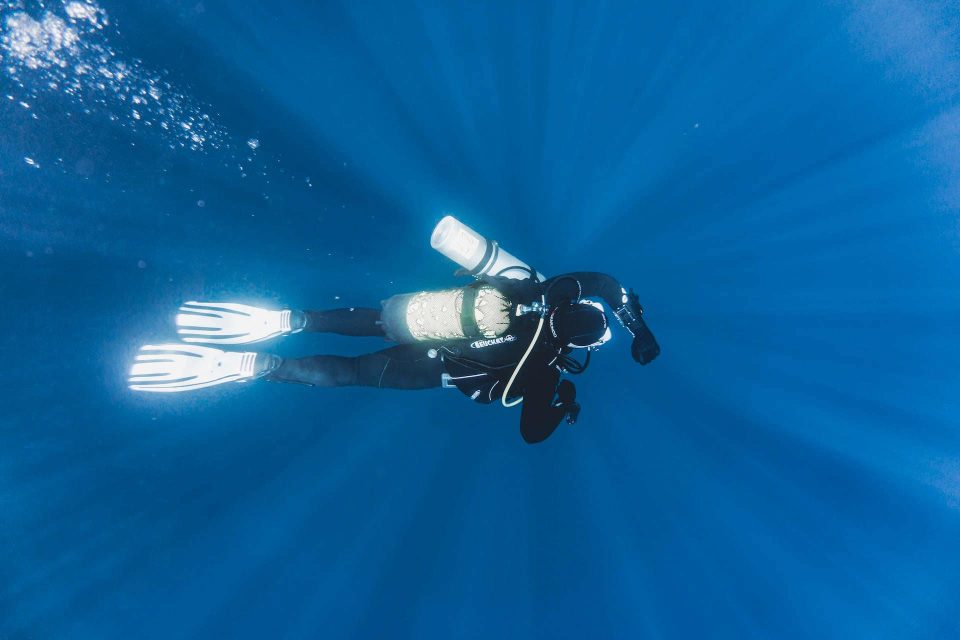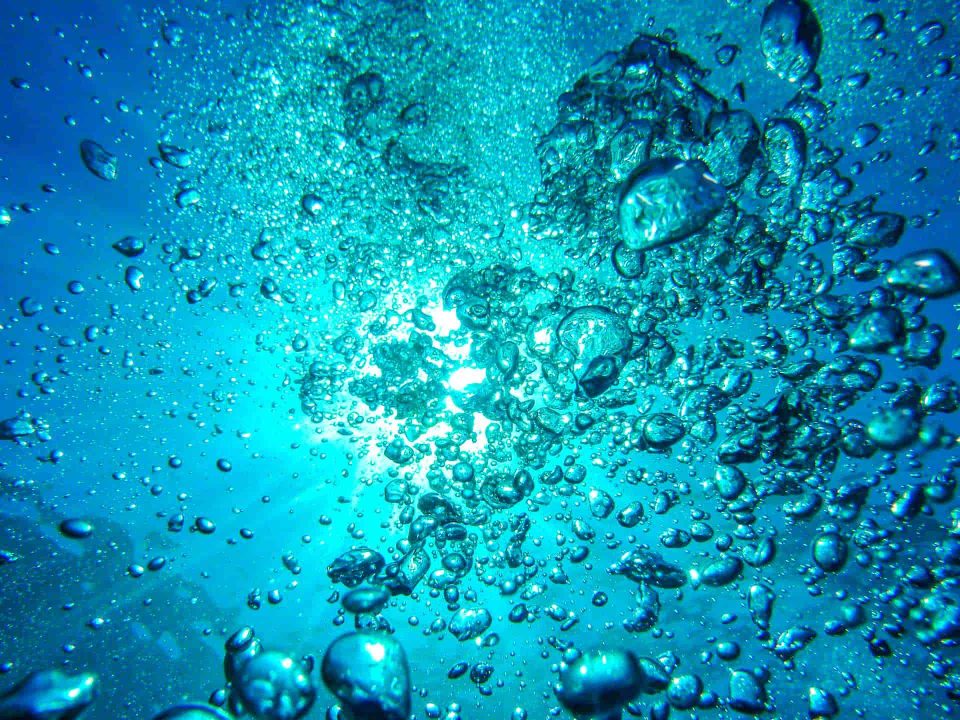Several gas laws govern what happens to us and our bodies during a dive. In this article, we will take a look at the most important scuba diving gas laws and review some diving physics from the Open Water Diver course.
I know, I know…physics isn’t everyone’s favorite topic. I understand.
But come on, it’s scuba diving physics!
We can make an exception here, so bear with me.
Scuba Diving Gas Laws Explained
Although this is part of any beginner course in diving, I have received a few requests on writing an article on the most important scuba diving gas laws explained in simple terms.
I have tried my best to make this as easy to understand as possible while including enough info to really get you to understand the concepts.
If this is your first time reading about them, don’t worry, they are very intuitive.
They should be familiar to any scuba diver so get a headstart in understanding them now!
Introduction to scuba diving gas laws
Disclaimer: As the metric system is used throughout science and in literature, we will use it here, too. If you are from one of the few countries that still cling to the imperial units (looking at you here, America!), the underlying laws will not be any different but you might have to check out the conversions for the numbers.
If you want to read about the reasons why the metric system hasn’t been adopted in the United States, check out this fun book on Amazon that I found a while back:
The gases we breathe in and are exposed to underwater are governed by so-called “gas laws”.
In this little overview, we will look at the three most important scuba diving gas laws and their implications. They are:
Most recreational divers use air as their primary breathing gas, however, these scuba diving gas laws are applicable to all breathing gases you might encounter, such as Nitrox, Trimix, or pure oxygen.
If you know your way around physics, units, and the metric system, you can click on one of the scuba diving gas laws and read more about it.
Otherwise, let’s begin with a few definitions:
Some definitions
Volume
Volume v is the space an object or substance (in our case gas) occupies in space. In scuba diving, the volume we usually refer to is the tank that holds your breathing gas.
Other examples include the volume of your lungs to breathe in the air or the capacity of your BCD.
Pressure
Pressure p measures the amount of force (F) pressing onto a surface (A).
For those interested, the mathematical formula is p = F / A.
Before you are worried, though, you don’t need to calculate anything like that in your Open Water Diver course.
An example everyone knows is the tires of your bike or car which you need to fill up before driving around.
Here, the pressure describes how much the air molecules inside the tire are pressed together.
The higher the pressure, the more compressed they are, and the more molecules (particles) you can fit in the same area.
We use bars as the unit to describe the pressure, however, you might have come across Pascal, atm, or even PSI (boooh imperial system).
For the scuba diving gas laws, recall the following types of pressure in diving:
Tank pressure
The maximum pressure inside standard-sized scuba tanks is 200 bar. This means we compress air by 200 times to fit more of it into the tank.

Atmospheric pressure
The atmospheric pressure (surrounding pressure) at sea level is 1 bar which is also called 1 atm. atm is an abbreviation for atmospheres.
The atmospheric pressure is the force of all the air above us in the atmosphere pressing onto us at each moment in time. This pressure is a given and doesn’t change during a dive unless we change locations.
Keep in mind, as we move higher up in altitude, the atmospheric pressure becomes less because there is less air pressing onto us. This is very important in altitude diving and in mountain lakes.
If you are interested in learning more about that, check out our altitude diving guide!
Water pressure
The deeper we dive, the higher the water pressure becomes. For every 10-meter depth, the pressure rises by 1 bar.
Saltwater is slightly denser, however, for our purposes the difference is negligible.
Use the water pressure calculator to check the pressure for different depths!
Total pressure
The total (or ambient) pressure is the sum of all pressures acting upon us. In scuba diving, this includes the atmospheric, as well as water pressure.
At 10m depth at sea level, the pressure is therefore 2 bars, and at 20 meters 3 bars.
Ideal Gas
In recreational diving, we usually talk about “ideal gases” when referring to our breathing gases. “Ideal gas” simply means that the scuba diving gas laws we talk about can be used in their simplest, most general form, and a few assumptions can be made.
Be aware that this might not always be true for gas mixtures in technical diving or when using special tanks, like those filled to 300 bars.
If you want to read up on the physics behind the ideal gas law, you can do so here.
Now, it’s time to get into the scuba diving gas laws one by one.
Boyle’s Law
The first scuba diving gas law we will cover here is Boyle’s Law, or Boyle-Mariotte Law.
Boyle’s Law is also the first one most scuba divers learn because it is closely connected to the first rule of scuba diving:
Never hold your breath!
The law states that:
For an ideal gas pressure and volume are inversely proportional at constant temperature.
Proportional means that when one of these two properties changes, the other one does, as well, by the same magnitude. Inversely signifies that they change in “opposite directions“.
Example: When the pressure is doubled, the volume is halved, when the pressure increases by 3, the volume thus is only 1 / 3 as large as before.

Why is Boyle’s Law important for scuba diving?
You know the first rule of diving, which is to never hold your breath (I know, I’m repeating myself here). This is because our lungs are filled with air, too, and as such exposed to Boyle’s Law.
When we breathe in, our lungs expand and when we breathe out, they get smaller.
Think of it like a balloon that you blow up with air or deflate. When we descend, the pressure rises and the lungs get compressed but filled up again upon each breath we take.
Since the pressure rises more and more the deeper we go, it takes more volume of air to fill it back up and the air consumption increases.
Yes, a second reason is that the pressure acting against our lungs at depth causes more energy to be needed to expand it.
When breathing regularly, the “balloon” is never inflated too much. However, if you start holding your breath and ascend, the total pressure decreases and the volume of air in your lungs expands.
If you keep holding your breath even longer, you risk overexpanding your lungs and causing all kinds of injuries.
This scuba diving gas law is also the reason why we need to put air into our BCD as we descend and release it upon ascending in order to stay neutrally buoyant throughout.
Dalton’s Law
The second important scuba diving gas was stated by John Dalton (1766 – 1844) who found that:
The total pressure of a gas is equal to the sum of the partial pressures of its components.
Partial pressure refers to the pressure of each of the components at any point in time.
Let’s look at this in the case of normal compressed air that most divers use on their regular dives.
We first need to know the components of air that I listed for you in the following table.
Rest refers to other noble gases besides Argon, such as Helium and traces of CO2, etc.
| Component | Percentage |
|---|---|
| Nitrogen | 78% |
| Oxygen | 21% |
| Argon | 0.9% |
| Rest | 0.1% |
| Total | 100% |
The components and their percentages never change, even underwater, so these numbers remain fixed.
What changes, however, is the partial pressure as we increase or decrease the total pressure.
When we descend, this leads to higher partial pressures, while ascending will lower them.
Pressures at sea level
Let’s look at how Dalton’s Law affects the air we breathe during a dive. I modified the table from before and now you can see the partial pressures of each component at sea level.
I also combined Argon and other noble and trace gases to simplify the table.
| Component | Percentage | Partial Pressure at 0 meters |
|---|---|---|
| Air | 100% | 1.00 bar |
| Nitrogen | 78% | 0.78 bar |
| Oxygen | 21% | 0.21 bar |
| Rest | 1% | 0.01 bar |
Pressures at 10m depth
Now it’s time to dive deeper. As you know, the ambient or total pressure rises underwater by 1 bar / 10m.
Again, the percentages don’t change – unless you change the breathing gas underwater- so all that changes is the total pressure of air.
Hence, the partial pressure of each component rises, as well.
At 10m the total pressure of air is 2 bar and the table will look as follows:
| Component | Percentage | Partial Pressure at 10 meters |
|---|---|---|
| Air | 100% | 2.00 bar |
| Nitrogen | 78% | 1.56 bar |
| Oxygen | 21% | 0.42 bar |
| Rest | 1% | 0.02 bar |
As you can see, all the numbers doubled because the surrounding ambient pressure is doubled, as well.
The sum of all the pressures of the components amounts up to the total pressure of the air at depth which is exactly what Dalton observed in his law.
Pressures at 20m depth
I’m sure you get the point, however, let’s repeat this for 20 meters, so you can see it one more time. It works the same way for any other depth.
| Component | Percentage | Partial Pressure at 20 meters |
|---|---|---|
| Air | 100% | 3.00 bar |
| Nitrogen | 78% | 2.43 bar |
| Oxygen | 21% | 0.63 bar |
| Rest | 1% | 0.03 bar |
Why is Dalton’s Law important for scuba diving?
This scuba diving gas law is very important for us as divers as it allows us to determine when a certain component’s partial pressure will reach a threshold.
From your Open Water Diver course, you remember the increasing toxicity of breathing gases, namely oxygen and nitrogen.
Oxygen toxicity
At around 1.4 bars partial pressure, oxygen becomes increasingly toxic which is why we may never exceed the depth of 56 m where this is reached.
If we take the absolute maximum tolerable partial pressure of 1.6 bars, as proposed by the CMAS, the maximum diving depth on air becomes 66m.
Diving this deep on air, however, is a bad idea because of a phenomenon called “nitrogen narcosis“.
Exceeding the maximum partial pressures of oxygen can damage the central nervous system, our lungs and even lead to death.
Please don’t exceed the limits of recreational diving set by your training agency!
Nitrogen narcosis
Once the partial pressure of nitrogen exceeds roughly 3 bar, reached at around 30 meters depth, divers experience narcotic feelings which get worse the higher the partial pressure rises.
In a Deep Diver specialty course, you learn to observe its symptoms (irrational behavior, tunnel vision, metallic taste in your mouth, feeling of “being drunk”) and how to react in that case.
As such, going to the maximum dive depth of 56 m / 66 m on air is very dangerous and most likely not very pleasant, even if no accidents happen.
Technical divers avoid the negative side effects of breathing gas toxicity by using different gas mixtures depending on their Maximum Operating Depth (MOD).
Henry’s Law
Last but not least, Henry’s Law deals with the solubility of gases in liquids in regard to the surrounding pressure. Among the scuba diving gas laws, this seems to create the most confusion for beginners and even experienced divers.
In his studies, Henry (1774 – 1836) found that:
The concentration of a gas dissolved in a liquid is proportional to its partial pressure above the liquid.
This is important in regard to decompression sickness and its causes. Let’s use a little example first to prevent confusion.
Experiment: Magically moving a lake up on a mountain
Imagine a lake at the foot of a tall mountain, like the one pictured below.

How does the water appear?
If you answered along the lines of “it remains still“, “there is no movement” or “I don’t know, there is nothing to see” you are correct.
As long as nothing disturbs the surface, it remains still. Now, let’s pretend we elevate the entire lake to the top of the mountain.
What happens now?
The water will start “outgassing“, thereby releasing gas from the water into the air above.
You will be able to observe this process as bubbles form on the surface of the lake, making it look like sparkling mineral water.
The lake used to have gas trapped in it at the previous pressure from the foot of the mountain, let’s say 1 bar.
After it has been moved up to the top of the mountain at 1000 m, the surrounding pressure is now 0.9 bar (because when we move further up, the pressure decreases by 0.1 bars/ 1000m) and a pressure difference arises.
As you know from high school physics, this will cause the gas to move toward the lower pressure to even out the difference in a process called “diffusion“.
Since the lake has been moved instantly, the gas must also come out immediately which causes bubbles.

Once the pressure inside of the lake is equal to the outside pressure again, let’s say after one week, the bubbles will subside.
If the lake had been moved slowly, for example by 10 meters per day, the gas would have had the time to be released gradually and without bubble formation.
For those interested: If we now moved the lake back down to the foot of the mountain, the process would start again in the opposite direction, with gas dissolving into the water.
However, it would not be visible by eye.
Henry’s law while diving
The process just described is exactly what happens on each and every dive. When we descend, the pressure rises and more nitrogen is dissolved into our tissues, blood, organs, and bones.
Upon starting the ascend, this excess gas must leave the body either through exhaling or diffusion from our tissues.
Why is Henry’s Law important for scuba diving?
Similar to the lake example, if diffusion happens too fast while scuba diving, bubbles form when the gas is immediately released.
We sometimes call this the “soda can effect” because it is similar to a soda can that has been opened too fast and now the bubbling content shoots out in a big splash.

This causes a number of dangerous and potentially life-threatening symptoms which all fall under decompression sickness.
Remember, however, it isn’t Henry’s Law that causes the decompression illness which only explains why diffusion is caused.
Instead, the reason for decompression sickness is not obeying maximum ascent rates, non-decompression limits, and the maximum depth limits set by your training agency.
Every diver knows that DCS is pretty bad. Please stick to the common rules and regulations of recreational diving that you have learned in your beginner course.
This will ensure you are always safe on every dive, especially if you combine that with your now refreshed knowledge on the most important scuba diving gas laws!
If you want to learn how you can dive with even less Nitrogen intake during a dive and get longer non-decompression limits, take a nitrox diving course with your local dive school!
We offer a great online course that will show you how to use this special gas mixture and become a certified Nitrox Basic diver.
Conclusion
I hope you learned something from this article on the most important scuba diving gas laws explained in simple terms. Reviewing the basics taught in your Open Water Diver course is always a good idea, especially if you haven’t gone diving in a while.
If you have any comments, thoughts, or suggestions, leave them here or hop on over to social media channels and discuss them with me.
Join the email list to get regular diving tips, tricks, insights, and news straight to your inbox!
Always dive with friends and happy bubbles.
Cheers
Julius


